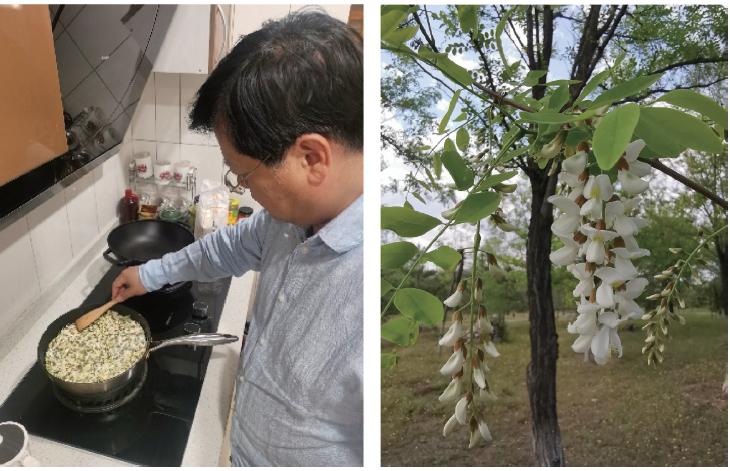
ESSAY
Plant-based diet: “Cook up” the sustainable future
Yong-Guan Zhu
Soil Ecology Letters,
https://doi.org/10.1007/s42832-022-0150-6
原文链接,点击文末“阅读原文”获取
Last spring, while seeking opportunities of developing value-added organic fertilizers for sustainable crop production, I visited a very large chicken farm in Fujian province, east China. After careful disinfection and wearing a protective coat, I entered one of the chicken hubs. I saw thousands of chicks living in high density but under well controlled growth conditions. Afterwards, when I went to the processing section of the farm, I was thrilled by the highly automated facilities, from slaughtering, plucking, dissecting, and freezing to packing. With these intensive and automatic facilities, each year this farm produces nearly 600 million chickens, something like one chicken for every two Chinese people.
Thanks to these highly intensive animal farms we can have meat pretty much whenever we like to eat meat. As a result, many people take animal food for granted without actually realizing what is behind the meat we consume, such as feed, manure, antibiotics and greenhouse gas emissions.
Research has already shown that on average we are eating too much meat, much more than we need. And overeating meat is not only unhealthy, it also greatly increases the ecological footprint of our life, causing negative effects on our living environment and the entire planet.
Some 40 years ago, when I was a kid (seems a long time ago, though I still feel I am rather young!), meat was in short supply. Each family had a quota and a voucher was used to purchase meat. In those days, my parents struggled to feed their three boys with reasonably nutritious meals, often with rice and “stir-fry” dishes largely composed of mixtures of diverse plants.
Although nearly half a century has passed, my taste buds still live in my childhood, and I am tightly bound to the dishes that my parents cooked. It is the taste of home that has been lingering in my mind. Thus, over the years, I have been enjoying cooking food for my family and friends, partly to satisfy my youthful taste buds (Fig.1).

Fig. 1 In the spring, wild plants are harvested for food, and the flower of Sephora Japonica Linn is a popular food in northern China, for making flower pan cake.
“Stir-fry” dishes usually contain only around 10 % meat or no meat at all, and the meat is cut into small cubes, slices or shreds. The meat, according to personal preference and nutritional value, can be stir-fried with very diverse vegetables. Beyond personal preference and nutrition, the choice of vegetables can also be made for the texture or visual impact. For example, you can stir-fry slices of carrot, yam, snow pea and meat (or sometimes with black fungi-“tree ear”, a very nice combination of colors, therefore giving the additional joy of the visual pleasure of the meal. You can also cook shreds of bamboo shoot (crunchy), solid bean curd (soft) and meat (chewy), that gives you a mixture of different textures, thus increasing the pleasure of chewing. I thus think “stir-fry” dishes with diverse vegetables and optimum meat (and its flavour) gives you balanced nutrition, but represents a much-reduced impact on the environment.
The other cooking technique that I like a lot is “stuffing”. Instead of having pure meat balls, I often stuff pork mince into puffed bean curd (thus containing lot of small pores inside it). By stuffing, the meat portion makes very close contact with the puffed bean curd. After stewing, meat flavour and fat are gradually released and penetrate the pores. This actually allows the full integration of the meat and bean curd, and when you bite it the meaty fragrance will burst into your mouth, and then while chewing you will enjoy the pleasure of combined flavours and textures. Cooking in this way reduces meat intake by at least 50% and delivers more balanced nutrition, and enhanced pleasure of the meal!
Another sustainable dish in China is soup, with a wide range of soups, often with lots of vegetable ingredients and meat or animal bones (chicken, pork or fish). Soups are usually served at the beginning of the meal, particularly in southern China, such as Hong Kong and Canton. One soup that I still remember vividly is a soup combining soybean and pig bones. In the old days, one could buy pig bones without a voucher by going to the butcher’s shop early in the morning. Soybean/bone soup not only satisfies your nutritional needs and sensory pleasure, but is also very economical! After the meal you can sun-dry the bones and sell them through a waste recovery system, and you can possibly recover the cost of buying them in the first place! Animal bones can be used to make bone meals for feed (rich in phosphorus and calcium) and bone char is a high-quality adsorbent and soil amendment. Nowadays, unfortunately, much of the food waste is disposed of in landfill or incinerated. What a waste!
China is also famous for making full use of animal products, from feet, tripe, intestines to blood. Animal fat is usually well used, in some cases the fat is rendered with dry heat to make lard. A simple plant-based meal could be just rice with lard, this was a typical childhood meal for my family. While the freshly cooked rice is still warm, you take a teaspoon of lard and mix it with the rice. The lard will melt away and through mixing each rice grain will eventually be coated with the flavorful oil, then you dress the rice with soy sauce. You can imagine what sensory pleasure you can get with the blending of fat fragrance and soy sauce umami. On the side with the rice, you can also have a small dish of pickled vegetables and fried peanuts. The remaining material after rendering by lard-crackling can be used in “stir-fry” dishes, for example Chinese leaves or any other green vegetables, or simply as a fragrant crispy snack.
My collaborator, Professor Qirong Shen from Nanjing, once commented that he is not too impressed with all the papers I have published (although there must be some good ones), but he is astounded by the delicious food that I can cook. Well, actually this comment is a bit of an exaggeration. After all, we all have to eat, and being able to cook is both natural and basic. But I do think that developing plant-based cuisine has an important and lasting impact on both personal health and the Earth’s sustainability.
Acknowledgements
I thank Dr Peter Christie, my first supervisor overseas, and his wife Susan for their comments. They both are practicing sustainable lifestyle, and in particular they take plant-based diet.
文章中观点仅代表作者个人观点,不代表本网站的观点和看法。
神州学人杂志及神州学人网原创文章转载说明:如需转载,务必注明出处,违者本网将依法追究。